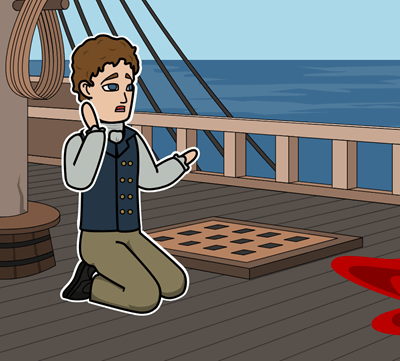TWIST Analysis Graphic Organizers
A growing trend in ELA has been the incorporation of vertical teaming strategies in classrooms. These strategies include a number of acronyms, analogous to “PEMDAS”, but for English class. This “order of operations” helps students through a prose analysis by suggesting to them what and where they should start when interpreting a section of literature.
With the TWIST method, students are asked to look for and analyze the following terms: tone, word choice, imagery and detail, style, and theme. When completing a TWIST, students may use a paragraph or even a few pages, looking at each of these items systematically, both sequentially and as they relate to each other. For example, when examining tone and word choice, students should find a correlation between the two. The graphic above illustrates how each part of the TWIST should be connected, as each element overlaps with those adjacent to it.
TWIST Helps You Answer the Following Questions:
- How do great writers create a tone that a reader can feel through their work?
- What are the parts of literature, and how can we learn to analyze its meaning?
- How do literary elements affect a reader's understanding of a work of literature?
Breaking Down TWIST
Before reading, it is a good idea to introduce students to the steps of TWIST and go over any terms that may be new to them.
Tone
The general character or attitude of a place, piece of writing, situation, etc. Tone words should always be adjectives and convey one of the following attitudes: Positive, Negative, Humorous (Ironic/Sarcastic), Sorrowful (Fearful, Worried), or Neutral.
- Amiable
- Calm
- Confident
- Excited
- Joyful
- Proud
- Surprised
- Whimsical
- Accusing
- Angry
- Critical
- Furious
- Hateful
- Insulting
- Quarrelsome
- Threatening
- Comical
- Ironic
- Humorous
- Joking
- Mocking
- Pompous
- Satiric
- Teasing
- Anxious
- Apologetic
- Despairing
- Fearful
- Horrific
- Mournful
- Pessimistic
- Somber
- Apathetic
- Candid
- Detached
- Earnest
- Formal
- Objective
- Questioning
- Reminiscent
Word Choice
The author’s use of specific and accurate words, to “show” the reader rather than to “tell” them. Adjectives are extremely descriptive, and nouns are very particular. When looking for word choice, students will notice ‘clusters’ of words that evoke the same meaning or tone.
Imagery and Detail
Imagery is visually descriptive or figurative language in a literary work. For this element, students want to look at the use of onomatopoeia, alliteration, similes, metaphors, hyperbole, analogies, personification, and euphemisms. These are all details that the author will use to give a sense of emotion to the reader. Very descriptive, figurative language paints a picture in readers’ minds, making this term exceedingly important for students to examine.
Style
Literary style refers to the way that the author uses words – the author’s vocabulary, sentence structure, figurative language, and sentence arrangement. The way an author presents the information determines the way in which the reader interprets it. The wording itself lends insight into the emotions or concepts the author wants convey with the scene, setting, or characters.
Types of Literary Styles
- Expository
- Descriptive
- Persuasive or Argumentative
- Narrative
- Original
- Informal
- Formal
- Journalistic
- Archaic
Theme
The subject of a piece of writing, usually the author's thoughts on a specific topic. When looking at theme, students should use the other parts of the TWIST to piece together information about the author's intentions. By looking at the tone and imagery, it makes it possible to pinpoint the topic. From there, students will need to infer the author's thoughts on it. Using imagery and style will help them uncover the attitude of the author on the topic.
Related Activities
Check out these TWIST activities from our guides on "O Captain! My Captain!", "Caged Bird", and "If".
TWIST Analysis Lesson Plan
This lesson will overview the TWIST model of interpreting prose and assist students in learning how to use this systematic method of hypothesis and discovery. This will lead students to understand the deeper meanings contained in the text by completing a prose analysis.
Grade Level: 6-12
Time: 45-Minute Class Meeting
Standards
Although, this lesson can be used for multiple grade levels, below are examples of the Common Core State Standards for Grades 9-10. Please see your Common Core State Standards for the correct grade-appropriate strands.
- ELA-Literacy.RL.9-10.1: Cite strong and thorough textual evidence to support analysis of what the text says explicitly as well as inferences drawn from the text
- ELA-Literacy.RL.9-10.2: Determine a theme or central idea of a text and analyze in detail its development over the course of the text, including how it emerges and is shaped and refined by specific details; provide an objective summary of the text
- ELA-Literacy.RL.9-10.4: Determine the meaning of words and phrases as they are used in the text, including figurative and connotative meanings; analyze the cumulative impact of specific word choices on meaning and tone (e.g., how the language evokes a sense of time and place; how it sets a formal or informal tone)
Objectives
Students will be able to read and explain the elements of prose using the TWIST method on a segment of a literary work.
TWIST Example for “The Scarlet Ibis”
Using the first paragraph of “The Scarlet Ibis”, students can depict, explain, and predict what will happen in the story, while getting a good idea of the author’s voice in a prose analysis.
It was in the clove of seasons, summer was dead but autumn had not yet been born, that the ibis lit in the bleeding tree. The flower garden was stained with rotting brown magnolia petals and ironweeds grew rank amid the purple phlox. The five o'clocks by the chimney still marked time, but the oriole nest in the elm was untenanted and rocked back and forth like an empty cradle. The last graveyard flowers were blooming, and their smell drifted across the cotton field and through every room of our house, speaking softly the names of our dead.
T - TONE
Grief: Memories of those who have died; perhaps a child.
W - WORD CHOICE
Dead, not born, bleeding, strained, rotting, brown, ironweeds, rank, untenanted, empty cradle, graveyard, drifted, dead.
I - IMAGERY
“…the oriole nest in the elm was untenanted and rocked back and forth like an empty cradle.”: Image of an empty nest.
S - STYLE
The author is using foreshadowing in the following lines: “summer was dead, but autumn was not yet born”; “…last graveyard flowers were blooming”; “speaking softly the names of our dead”.
T - THEME
The narrator speaks in a past tense tone using words and imagery that sound like the theme could be the passing or memory of a loved one.
After Reading
If this is your first time doing TWIST with your classes (or in a special education class), a great idea is to ask students to try filling out the worksheet individually then pair them up, or put them into groups, to create a poster. As you do these more often, you can challenge students by asking that they do it individually.
Once they have finished their worksheet and it has been checked, students can begin to create their storyboard of the prose analysis. Afterwards, you can have students present their storyboards and findings to the class! Just check out our article on how to present a storyboard!
TWIST Example
How to Apply TWIST Analysis to Non-Fiction Texts
Introduce the TWIST Analysis Framework
Explain the TWIST acronym, which stands for Tone, Word Choice, Imagery, Style, and Theme. Emphasize that TWIST analysis can be applied to non-fiction texts to uncover the author's purpose, persuasive techniques, and underlying messages.
Select Relevant Nonfiction Texts
Choose non-fiction texts that are suitable for analysis using the TWIST framework. Consider texts such as speeches, articles, essays, opinion pieces, or informational texts that convey a clear message or argument.
Analyze Tone and Author's Purpose
Guide students to identify the tone of the non-fiction text and determine the author's purpose or intended audience. Encourage students to consider the emotions, attitudes, or persuasive techniques used by the author to convey their message.
Examine Word Choice and Persuasive Techniques
Explore the word choice and vocabulary used in the non-fiction text. Help students analyze how specific words or phrases contribute to the author's argument, evoke emotions, or shape the overall tone of the text.
Analyze Imagery and Rhetorical Devices
Encourage students to identify and analyze any visual or sensory imagery used in the non-fiction text. Discuss the impact of rhetorical devices such as metaphors, similes, or vivid descriptions in conveying the author's message or enhancing the persuasive nature of the text.
Identify Style and Central Theme
Discuss the author's writing style and any distinctive features that contribute to the effectiveness of the non-fiction text. Guide students to identify the central theme or main idea conveyed by the author and analyze how the other TWIST elements contribute to the development of the theme.
Frequently Asked Questions about TWIST Graphic Organizers
What are some common issues that may arise when using TWIST graphic organisers for literary analysis?
Some common issues that may arise include oversimplification of complex ideas or events, overlooking important details or nuances, and not providing enough guidance or structure for students who may struggle with visual representation. It is important to balance the need for creativity and expression with the need for accuracy and comprehension. It's also important to acknowledge and include other elements for analysis and not just those covered by the TWIST acronym such as point of view and drama.
How is a TWIST storyboard useful in literary analysis?
TWIST is an acronym for tone, word choice, imagery, style, and theme. A TWIST storyboard can be a useful tool since it gives students an opportunity to look at the elements included in a piece of literature and analyze them both systematically and sequentially as well as how they relate to the other literary elements underpinning the literary work. They are useful since they help students better understand and analyze a story by visually representing key elements and facilitating discussions about the literary elements you want to highlight. They are a good starting point for writing assignments or presentations.
Are there other literature-related acronyms that can be useful in lessons and made into storyboard cards?
Yes, there are other acronyms like TWIST applicable in literature analysis and can be made into storyboard cards as lesson aids. Examples include TP-CASTT - title, paraphrase, connotation, attitude, shift, title (again), and theme. TP-CASTT is traditionally used with poetry but can be applied to other types of literature, including short stories and chapters in novels. SMELL - sender, message, evidence, logic, and language for analyzing rhetoric.
What are some common issues that may arise when creating storyboards for literary analysis?
Some common issues that may arise include oversimplification of complex ideas or events, overlooking important details or nuances, and not providing enough guidance or structure for students who may struggle with visual representation. It is important to balance the need for creativity and expression with the need for accuracy and comprehension. Additionally, special considerations should be made for students with special needs, such as providing additional visual aids or modifying the storyboard format to accommodate individual needs. For example, some students may benefit from simplified visual representations or larger font sizes.
© 2025 - Clever Prototypes, LLC - All rights reserved.
StoryboardThat is a trademark of Clever Prototypes, LLC, and Registered in U.S. Patent and Trademark Office






